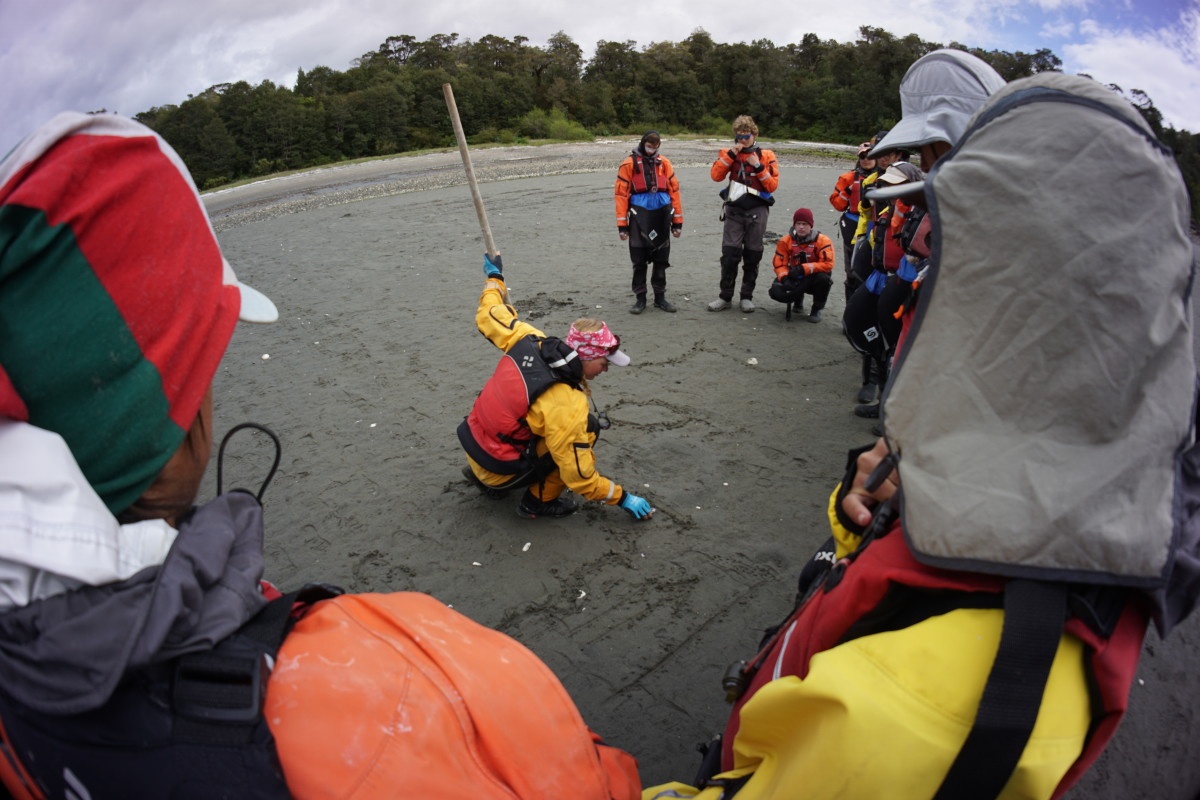
Imagine this: You’re trying to figure out the best way to cross a river with your group of four friends. Even though you’ve crossed rivers on your own before, you’ve never led a group while doing it.
You’re wracking your brain trying to remember any acronyms that might help you, scrambling around the riverbank trying to guess the river’s speed, and weighing the equally strong temptations of “just going for it” and staying put, making camp, and coming back to the decision in the morning.
When you’re on the verge of total frustration, your friend shouts, “Hey, I found a log! Let’s use it to cross the river!”
Part of you can’t resist the idea of keeping your feet dry and crossing in what looks like the quickest and easiest way. But the other part imagines slippery wood, lost balance, and a fall into the water below. Your friends cluster around, and you begin talking about the pros and cons of wading, trying the log, turning around, or continuing to scout. No one has a clear idea of what to do.
Not only do you have to decide which option is best, you have to decide how to decide on one.
As you consider the problem, you’re using different decision-making strategies. Decision making strategies are the ways we use information to make a choice—in this case, it’s about a river crossing, but these also apply to picking next semester’s classes or setting a long-term business strategy.
It’s important to know the different decision making strategies available, whether you’re being an active team member or a group’s designated leader. Using the wrong strategy at the wrong time might bog down your group, or lead your team into a poor decision.
For most of us, learning which strategy is best for the situation is a process of trial and error—it comes from experience, from trying new things, and adapting when the outcomes aren’t what you expected.
Here are the 4 decision making strategies we teach at NOLS, and when and how it’s a good idea to use them.
1. The Strategy for When You Have All the Information

Analytic decision making is a methodical, step-by-step approach to decision making. It relies on objective information that you can observe. It’s attractive because it breaks down complex decisions into smaller pieces in a logical way—for example, when you’re trying to decide if you can hike for another few hours, you might consider factors like daylight remaining, what snacks you have, and your energy levels to arrive at a reasonable conclusion
Sometimes, though, the comfort of applying logic to a complicated situation might mislead you—like when you assume you have enough water for an entire day without checking what’s actually in your bottle.
When to use analytic decision making
- You can explicitly define your goals
- You have complete and accurate access to all the information you need
- You have the experience to know what information is relevant and what you can ignore
- You have enough time to make your decision
- Pros: This strategy is methodical, versatile, and easy to communicate to others. It works well when the goals or variables can be represented by numbers.
- Cons: It's most useful in very specific circumstances. It can also be time consuming and tedious, especially for novices.
Traps for analytic decision making
- The availability trap—the tendency to believe that the most easily-recalled events are the most likely.
- The representativeness trap—the tendency to believe that a single event is typical of that entire class of events.
- The anchoring trap—the tendency to believe that the first or last pieces of information are the most important.
2. The Strategy for Some Experience + Limited Information

When you have some experience in an area but not a ton of information, you can use heuristics to guide decisions. Heuristics let you generalize based on a few pieces of information.
Take car brake lights as an example. When you see red lights appear on the car in front of you, you’ll probably react by pushing the brakes on your own car. You likely didn’t break down every piece of information—you responded based on knowing what red lights have meant in past situations.
Heuristics aren’t universally correct, but they work enough of the time that they're helpful in the right situations.
When to use heuristics
- You have reliable heuristics that apply to the situation and confidence that they’re accurate
- When consequences are minimal
- Pros: Fast and simple. With practice, they can become unconscious, freeing your mind for other things.
- Cons: They aren’t always right. Relying on the wrong cues to guide decisions can result in poor decisions.
Traps for heuristic decision making
- Familiarity trap—because a setting is familiar, it is also safe or in your control, like driving
- Consistency trap—when we remain consistent to an earlier decision even in the face of new evidence that our decision may have been wrong
- Social proof—when we see others engaged in an activity, which makes it seems less risky
3. The Strategy for When You’re the Expert

When you’re competent enough in an area that you base more of your decisions on intuitively recognizing and putting together information, even when it’s incongruous, you’re able to use expertise decision making as a strategy.
For example, experienced backpackers might notice that a rainstorm is imminent as soon as the wind picks up, while a less-experienced person might need more clues (building clouds, changing temperatures) to come to the same conclusion.
When to use expertise decision making
- You have the appropriate experience and can check your decision against heuristics
- Pros: Expertise results in fast, accurate decisions that often take place above conscious thought
- Cons: Because it’s a subconscious process, experts may fall into decision making traps; they may have trouble coaching others in things that seem obvious; and you may think that being an expert in one area means you're an expert in other areas.
Traps for expertise decision making
- Thinking you’re an expert when the information is beyond your scope of understanding or is different than what you expect.
4. The Strategy for When You Have No Idea

Weird as it seems, flipping a coin is a perfectly legitimate decision making strategy. Random choice is the simplest of our strategies, and when used appropriately it can be effective and time saving.
For example, on NOLS backpacking courses we typically hike in small groups of three or four as we move during the day, then meet at our next campsite in the evening. For some students, choosing these groups can be challenging—they might worry about hurting a friend’s feelings by not hiking with them, or getting someone “stuck” with a person they’d rather not hike with. In this case, using random choice to pick hiking groups can be a great tool for students to get the desired outcome without needing to play into group dynamics.
When to use random choice
- Time is short, consequences are minimal, and you don’t have access to any of the other strategies
- You’re choosing between alternatives that produce outcomes so similar or ambiguous that there’s no practical way to distinguish them
- You can’t make the decision any other way
- Pros: Simple and fast
- Cons: No control over the outcome
Traps for random choice
- Abandoning other decision making strategies too quickly
The next time you make a decision, take a second to stop and think about how you got there. What was the outcome? Did you just get lucky, or was it the right strategy for the right situation? When you're able to identify the types of strategies you use, you won't have to rely on luck—you're able to understand what happened, and use that learning to make better decisions in the future.
Bring customized leadership training to your organization.
Editor’s note: Strategies adapted from the NOLS Leadership Educator Notebook
Written By
Molly Herber
Molly is a NOLS instructor and writer. She loves the smell of her backpack and does her best writing before 7:00 am. When she's not scouting the next post for the NOLS Blog, she's running and climbing on rocks in Wyoming. Follow her on Instagram @mgherber



